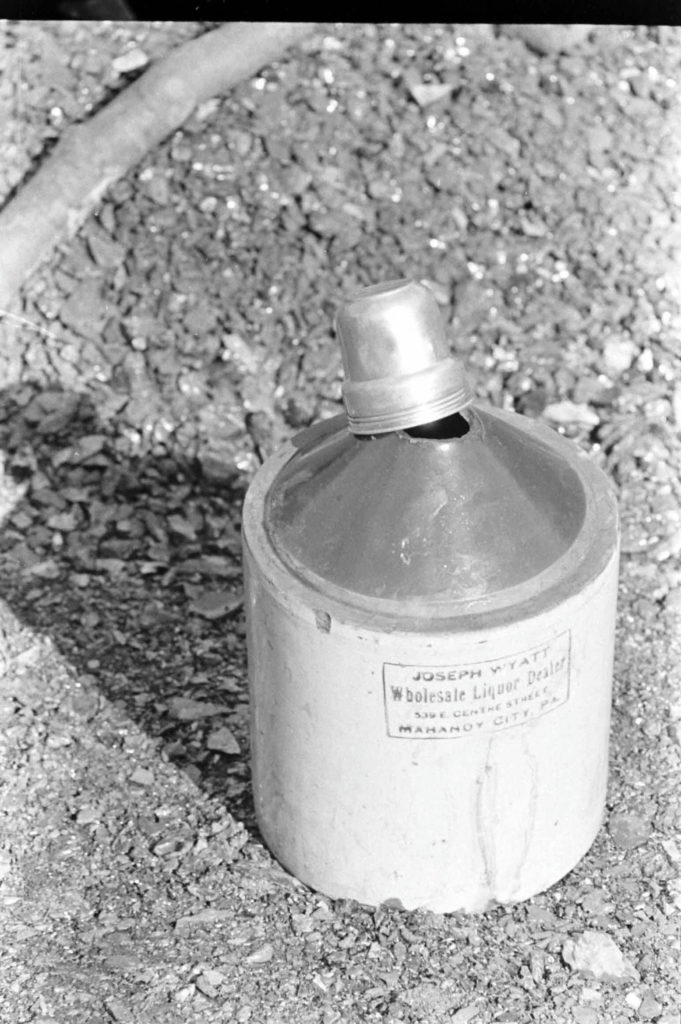By Mitch Troutman
Bootleg coal towns had makeshift alert systems. When the coal companies moved against the bootleg miners, some towns rang the fire whistle to bring the townspeople out into the mountain. In Mahanoy City, a large group of unemployed fought to protect the patchtown of Jacksons from being strip-mined off the map. Their alert was the Kaier Brewery whistle. This was most likely at the hands of the employees, but it was a risk. Alcohol was still illegal and the Kaier Brewery had an elaborate method for producing the strong stuff. It was remarkably similar to the bootleg miners’ own system of look-outs.
From the Mahanoy Area Historical Society:
During Prohibition, 1920 to 1933 … the plan was to keep the business profitable during the dry period. The Kaier brewery was operated by Shalleck and Zack, “two front men” who ran the risk of spending time in a federal prison if the brewery was caught putting out beer with an alcohol content over 0.5%. alcohol by weight. Bill Dewey also was involved in helping to operate the brewery during prohibition, but not in the same capacity as Shalleck and Zack. Kaier’s sold legal “near beer” at 0.5% and illegal “good beer” at 3.2% alcohol by weight from 1920 until 1933.
While Prohibition was being enforced, Kaier’s ran a pipe line down the North branch of the Mahanoy Creek to a barn on Vine Street (where the Schuylkill bus barn was later located), and racked (filled) their kegs with illegal high alcohol beer. The brewers had to brew high alcohol beer and distill most of the alcohol from that beer in order to make good tasting legal low alcohol beer. Kaier’s had some secret walled-in cellars that contained this high alcohol beer that they had no intention of running through the distillation process. When the brewery was filling kegs and shipping this illegal beer, they had “spotters” stationed on all roads leading into Mahanoy City. These spotters had the license plate numbers and the model and colors of the Federal Agent’s cars (naturally Kaier’s paid for this information), and would phone the brewery if they spotted a Federal Agent’s car. When the brewery received one of these dreaded calls, they immediately shut down the keg filling operation and assigned the employees to other jobs in the brewery. Kaier’s used their bottling equipment during Prohibition to package “temperance” or soda as it is called today. They had a variety of flavors, including Kaier’s Ginger Ale, Kaier’s Root Beer, Kaier’s Orange and others.





